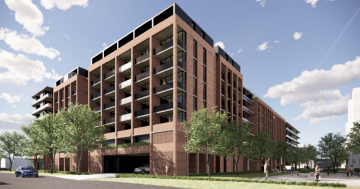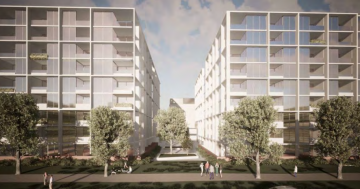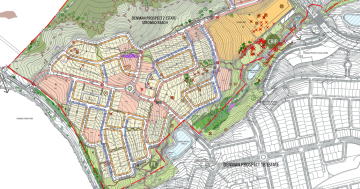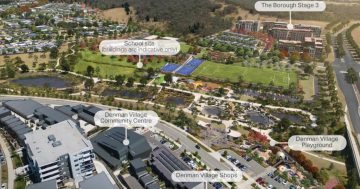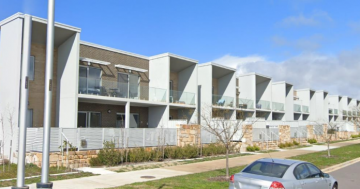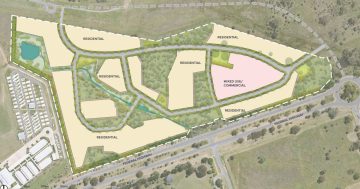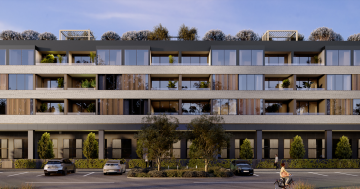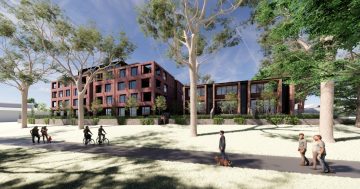The Government’s decision to use call-in powers to allow the Brumbies’ development in Griffith to proceed, when it does not comply with the Government’s own planning regulations, has set a dangerous precedent. As the current legislation stands, when the Planning Minister uses his/her call-in powers to approve a development, an appeal to the ACT Civil and Administrative Tribunal cannot be lodged.
What is the point of having a Territory Plan and a set of planning rules when a Minister can break the rules whenever he or she wants to, and cannot be held to account?
The point in this case appears to be to subvert the planning rules for the benefit of the Brumbies.
Apart from using the call-in powers, the government have waived a $7.5 million Lease Variation Charge – a significant loss of revenue we can ill afford. Furthermore, the Government is providing a $5 million grant to the University of Canberra towards Brumbies’ new building, a special one off $1 million grant and of course the $1.2 million annual grant and the $0.6 million payroll tax waiver. In total the government support in 2013/14 will amount to more than $15 million and then there will be the proceeds from the sale of the apartments in Griffith.
In future, developers will be able to point to the Brumbies development as an example for ‘bending’ or even breaking planning rules to increase profits.
Let’s look at some of the non-compliant features of the Brumbies development, which comprises 131 apartments on the 1.68 hectare site.
Firstly, it does not conform with any of the objectives for medium density residential development as specified in the planning rules. Its dwelling density of 78 per hectare far exceeds the 25 – 60 dwellings per hectare specified in the Canberra Spatial Plan for medium density housing.
Secondly, the development is also supposed to “respect and contribute to the neighbourhood and landscape character of residential areas whilst carefully managing change in suitable locations”. It is difficult to see how it achieves this, when the site is surrounded by open parkland zoned as Urban Open Space, a Heritage Listed oval and low density detached houses.
The excessive size of the development for this site has several flow-on effects. Let’s just look at some of them. The first relates to visitor parking. The Parking and Vehicular Access (PVA) Code requires the provision of 0.25 of a visitor parking space for each apartment. For this site the developer needs to provide 33 visitor spaces. In fact only nine have been provided on site, and the Minister has reduced the requirement from 33 to 25. So what is the point of a code if it can be overruled at will?
The current proposal is for visitors to park on Austin Street, but these parking spaces already exist, so it cannot be said they will be provided by the developer. As a result, the developer will not have to fund a further 16 (or 24 to comply with the code) visitor parking spaces. The public has been deprived of these spaces in the street and the developer has been effectively subsidised by the public.
The third issue relates to solar access. The Development Code requires that the site allows a minimum of three hours of direct sunlight onto the floor or internal wall of the main daytime living area and the front edge of any associated private open space of at least 70% of apartments between the hours of 9.00 am and 3.00 pm on 21 June. However, only 57% of apartments meet the rule for living areas and only 67% meet the rule as it applies to private open space.
The Minister has used his call-in powers to approve a development, which fails to meet the Government’s solar access policy and at the same time claims that it is in the public interest for the development proceed.
Fourthly, the area of ~607 m2 allocated for workers to park during construction appears too small, judging by the parking requirements for nearby developments. The application should not have been approved without the developer providing a proper estimate of the parking space required on-site during construction. Extensive illegal parking on nearby verges and parks should not be allowed.
Finally, in the report by the Legislative Assembly’s Standing Committee on Planning on the change of zoning for this site, it is recommended that any redevelopment be conditional on “comprehensive flood studies” being undertaken and made publicly available. The clear implication is that the studies undertaken on the applicant’s behalf were not considered to be sufficient in the Committee’s view. The Minister has ignored this recommendation without making public his advice or the calculations made to obtain the estimates on which he based his decision.
This is just not good enough – it is time for the Government to lift its game.
David Denham,President GNCA












